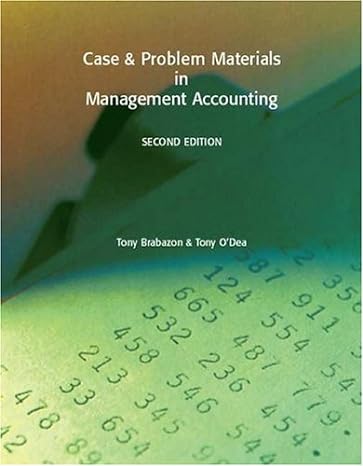Answered step by step
Verified Expert Solution
Question
1 Approved Answer
In 2003, a construction materials manufacturing company (Construct) purchased a tract of property located in New York City from Black-Top, Inc. (Black-Top). Black-Top was a
In 2003, a construction materials manufacturing company (Construct) purchased a tract of property located in New York City from Black-Top, Inc. (Black-Top). Black-Top was a privately held manufacturer of bituminous concrete. The property was the site of one of Black-Tops manufacturing facilities. The purchase and sale agreement for the property included an indemnification provision for potential environmental liabilities. However, Construct did not require a portion of the purchase price to be placed in escrow because it concluded that such a provision would adversely affect the purchase negotiations. Construct intended to use the site to produce construction materials, which would be delivered in New York City. Construct believed that the proximity of the site would give the Company a competitive advantage in the local market. In 2004, subsequent to the purchase, Black-Top filed under Chapter 11 of the United States Bankruptcy Code. Construct immediately attempted, without success, to secure an interest in the assets of the shareholders of Black-Top. In 2005, Construct was notified by a government agency that the Environmental Protection Agency (the EPA) was investigating the property acquired from Black-Top for potential water contamination. Construct, being proactive, contacted an environmental agency to do some testing related to the potential contamination. The agency estimated the probability of the EPA actually assessing Construct penalties would be approximately 60%, and the costs associated would be $250,000, including legal fees. In 2006, Construct was notified by the EPA that the property acquired from Black-Top was placed on the EPAs National Priorities List. The EPA named Construct, Black-Top and the former shareholders of Black-Top as responsible parties (PRPs). Knowing the financial position of the other PRPs, the EPA issued a unilateral administrative order to Construct to undertake the remedial investigation and feasibility study (RI/FS). Understanding the significance of the potential penalties associated with noncompliance of the unilateral administrative order, Construct began the RI/FS and filed suit against Black-Tops former shareholders for an unspecified amount. In 2006, Construct estimated its legal fees related to administering the remediation action would be $100,000 and the total estimated amount of the RI/FS would be $300,000. The legal proceedings with Black-Top were in the discovery stages at the end of 2006. In addition, Construct was unable to reasonably estimate the total cost of the remediation effort. Upon completion of the RI/FS in June 2007, Construct was advised by the contractors performing the RI/FS that the soil at the location was contaminated but the contamination had not affected water supplies. The contractors provided their recommended remediation plan which was presented to the EPA in late 2007. As of 2007, the plan was estimated to cost $1.5 million to implement. In August 2008, Constructs attorneys believed that they had a 75% chance of obtaining a $1 million settlement of their claim with Black-Tops former shareholders. Required Answer each of the questions below using both US GAAP and IFRS. a) In 2003, at the time of the purchase, should Construct record a liability for environmental liabilities? If so, how much? b) In 2004, should the company record any liability due to Black-Top filing for Chapter 11? If so, how much? c) In 2005, should the company record any liability for the potential environmental liability? If so, how much? d) In 2006, should the company record any liability for the potential environmental remediation? If so, how much? e) In 2007, should the company record any additional liability for the potential environmental remediation? f) In 2008, should the company record any gain contingency/contingent asset for the potential settlement
Step by Step Solution
There are 3 Steps involved in it
Step: 1

Get Instant Access to Expert-Tailored Solutions
See step-by-step solutions with expert insights and AI powered tools for academic success
Step: 2

Step: 3

Ace Your Homework with AI
Get the answers you need in no time with our AI-driven, step-by-step assistance
Get Started


